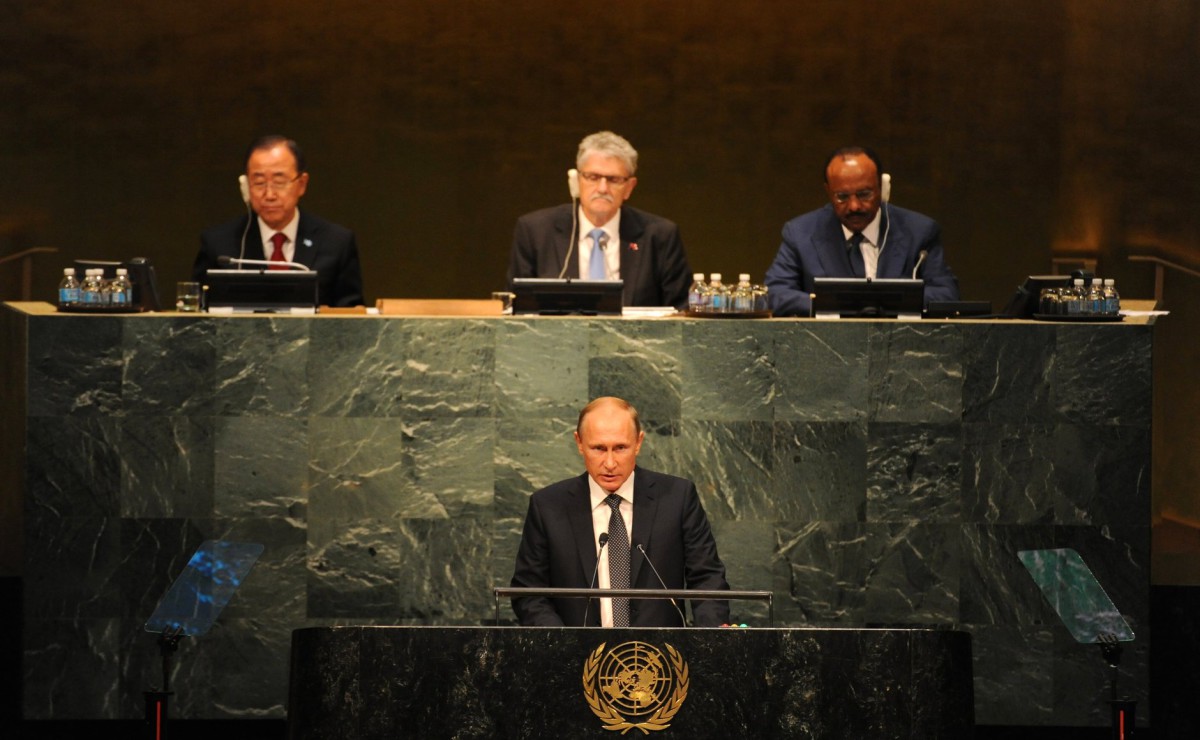Russia’s primary “sin” is that it is the only country in the world which dared to confront the primary instruments of American concept of “suppression by involvement”. That is why Russia is America’s enemy #1.
We have discussed the primary results of realization of American concept of “suppression through involvement” on the European front in the previous part of the article.
What is the situation on other fronts?
Near Eastern front
The largest aspect of American involvement of allies and enemies on this front is, of course, the war that the USA declared against “reincarnation” of global caliphatism against the “Islamic State” which had “suddenly” appeared in the region.
I want to emphasize in advance that this reincarnation didn’t appear out of nowhere, but was being prepared by Americans for a long time. In particular we can remind of the maps of the “new Near East” drawn and published in the media by American strategists back in 2006-2007. The borders of future states of the region in these maps turned out to be extremely far from the internationally recognized state borders.
Primarily the United States started putting this in practice between 2012 and 2013 when it declared that it supports the “moderate opposition” to Syrian President Bashar Assad. In March 2013, as Reuters news agency, British the Guardian and German Der Spiegel newspapers reported, the United States launched a secret training program in two camps, in south and east Jordan, to train militants fight against Assad’s government.
Jordan sources added that the goal of the program is to train approximately 10 thousand militants, that not only American, but French and British instructors participate in teaching them. They also said that a major part of the “trainees” in Jordanian camps are former officers and soldiers of Saddam Hussein’s Iraqi army who have been purged from military service after Iraq was occupied and Saddam Hussein was overthrown. In addition to that, radical Islamist reinforcements from Libya, Tunisia, Marocco, Egypt, Pakistan, as well as from Europe (Germany, Great Britain, France, etc.), Georgia and Russia have also arrived to Jordanian camps.
They started building armed opposition against Assad, but they built the military backbone of the “Islamic State”. What is this? Idiocy or thought-through politics?
In any case, specialists attribute the solid military and political tactics of ISIL (Organization banned in Russia), its military achievements and the numbers of new members it receives to the presence of these professional militants, well-trained and armed by the United States, at the core of the units of the “Islamic State”. This way, the Guardian refers to the UN Security Council report published in October 2014 when it states that “15,000 people have traveled to Syria and Iraq to fight alongside the Islamic State [Organization banned in Russia – Editor]… They come from more than 80 countries.“
The scale of “involvement” the USA secured as a result of the appearance of ISIL (Organization banned in Russia) are truly global. One of the most distant effects of involvement worth mentioning is a terrorist act of October 22, 2014 which occurred in Canada and which was unprecedented for this country. A local radical Islamist who dreamed of fighting alongside ISIL (Organization banned in Russia), but was banned from leaving the country due to his political aspirations, gunned down a war memorial guard and wounded another three people in the Parliament building.
Next, almost all countries in the Near Eastern region became “involved” and suffer various costs.
The situation in Iraq and Syria is quite difficult, full-scale combat is underway on the territory of these countries. United States planes and the planes of their allies bomb the forces and positions of ISIL (Organization banned in Russia) also on the territory of these countries.
Turkey found itself amidst a political-economic crisis. The war is happening on its southern border. Its intelligence agencies “helped” the war against Assad and the rise of ISIL (Organization banned in Russia). ISIL (Organization banned in Russia) forces are capturing towns and villages of Syrian Kurdistan.
To begin with, this leads to an influx of Syrian Kurd refugees to Turkish territory — there are hundreds of thousands of them already there (Turkey gathered all these refugees for months and allowed them to move into Europe in an instant, causing the European refugee crisis – Editor).
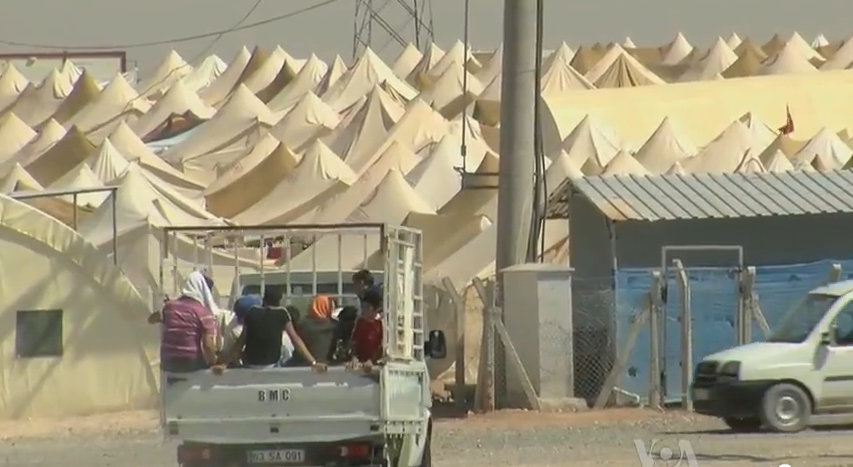
Secondly, this leads to self-organization of Peshmerga military forces of Iraqi and Turkish Kurds who demand to let them enter Syria to protect Syrian Kurds.
Thirdly, this causes the general activation of Kurdish resistance inside Turkey itself, which the government in Ankara considers (quite reasonably) as a threat of a new military-political destabilization of the country.
Fourthly, this leads to the political mobilization of Kurds not only in Turkey, but in Syria, Iraq and Iran, as well as to a new round of discussion of the need to create a single independent Kurdish state.
In this situation Ankara is obliged to “demonstrate what it’s capable of”. Does it think it needs to do this due to intellectual straightforwardness or due to foreign pressure?.. In any case, currently Ankara’s only option to demonstrate what it’s capable of means to finish off Syria. Only this and nothing else.
Which is why Turkey agreed to join the war against ISIL (Organization banned in Russia) under one condition: the promise of United States to overthrow Bashar Assad. However, specialists claim that Turkish intelligence agencies are involved in secret negotiations with ISIL (Organization banned in Russia) and provide intelligence services as support to ISIL (Organization banned in Russia). Those same specialists point out that ISIL (Organization banned in Russia) illegally exports oil from captured oil fields through Turkey with the silent approval of the United States (note that the article you are reading was originally published over a year ago – Editor). This exact export of oil secures an unprecedented financial-economic potential to the newborn terrorist caliphate.
The Sunni monarchies of the Persian Gulf are at the crossroads. Almost all of these (especially Saudi Arabia and Qatar) have already been deeply involved in the war against Assad, an ally of Shia Iran, and have contribute a lot to organize and arm those Islamist groups which have united to become ISIL (Organization banned in Russia).
But now, after the new “caliph” Abu Bakr al-Baghdadi declared all regional dynasties to be “unrighteous” (meaning, subject to termination), the monarchies of the Gulf can’t help but join the war against ISIL (Organization banned in Russia). In other words, they must make a tactical alliance with Assad’s forces, as well as with their main enemy which supports Assad in the war against ISIL (Organization banned in Russia) — with Shia Iran. And then try explaining such paradoxical transformations of alliances to citizens who are not used to such political nuances… Especially in case when these governments explained to their Sunni citizens for many years that Iran and Shiites are hellspawn, while most of the citizens of, for example, Bahrain and the oil “Eastern Province” of Saudi Arabia are Shiites who can’t help but look to Iran.
Iran is involved not only by participating in the war against ISIL (Organization banned in Russia) on Assad’s side. The second line of involvement is the negotiations regarding Iran’s nuclear program and American promises to loosen or even relieve the international sanctions in case the nuclear program will be cancelled. Sanction relief grants not only the ability to increase oil production and export, as well as balance the national budget to Iran. It also includes the hints of the USA regarding the prospects of building gas pipe line through Iraq and Syria to the Mediterranean for exporting Iranian gas from South Pars gas field.

But for this Iran needs to abandon the development of its nuclear program and take the “right” attitude towards Assad. In other words, Iran needs to surrender its pretty much only ally in the region to Americans and Sunnis of the Gulf.
Tehran, of course, wants the sanctions to be relieved. But at the same time it understands that in case Assad loses, its turn will come to become the “main enemy of global democracy”. And — for now — doesn’t buy into promises. But the lowering oil prices — another factor of involvement — creates new challenges for the Iranian economy, already weakened by sanctions and loaded with military expenses.
Jordan is involved both by the very fact of a full-scale training of Islamist militants on its territory, and by the awakening — due to the war against ISIL (Organization banned in Russia) — of a large part of Jordanian Palestinians. The latter, for the first time since the “Arab Spring”, again start to act under the banners of “Muslim Brotherhood” (Organization banned in Russia) with political demands.
“The Palestinian factor” combined with the “Syrian factor” have again extremely escalated the military-political confrontation in Lebanon. Heavy combat erupted in the north of the country in late October 2014 between government forces and Islamist militants from terrorist “Jabhat al-Nusra” (Organization banned in Russia).
The “Palestinian factor” has also become a reason of a dramatic escalation of the political situation in Israel. A high-profile terrorist act against a prominent Israeli activist of the Temple Mount Faithful movement was conducted on October 29, 2014. After this the soldiers of the Security Service shot the suspect Palestinian, which sparked the Palestine-Israel conflict yet again. People in Palestine territories started discussing the need to launch the third intifada against Israelis.
It is notable that on the next day, October 30, 2014, Sweden (the first among EU countries!) declared that it officially recognized Palestine as a state. In response Israel withdrew its ambassador from Stockholm. On November 1 — for the first time in the past 2 months — Palestine militants from Gaza Strip fired rockets at Israel.
The same “Palestine factor” became one of the major reasons for the political escalation in Egypt. On October 24, 2014, two major terrorism acts happened on the border with Gaza Strip. Over 30 Egyptian officers and soldiers got killed as a result. The President of Egypt Abdel Fattah as-Sisi declared that an operation will be launched in order to terminate the threat of Islamism and terrorism in northern Sinai.
Bedouins and Palestinians were supposed to be evicted from 1,5-3 km wide border zone of Sinai in Rafah city area in order to stop the contraband and terrorist flow between Egypt and Gaza strip. Announcing these measures caused a wave of protest on the part of Egyptian “Muslim Brotherhood” (Organization banned in Russia) and their Palestinian allies from Hamas.
As we can see, the whole Near East is getting steadily destabilized as the war against ISIL (Organization banned in Russia) is expanding. This “war” itself, declared by the United States, is full of surely not coincidental oddities.
These “oddities” let us claim that what we see with a high degree of probability is not a war at all. And that ISIL (Organization banned in Russia) is not the result of mistakes of the USA, but an abscess it has constructed to “involve and suppress” the countries of the region long-term. The success of USA in “involving and suppressing” on the Near Eastern front is already obvious, since this abscess is getting bigger and will doubtfully be terminated in the foreseeable future.
What happens on other fronts of involvement?
Asia-Pacific front
Back in 2011 high-ranking U.S. officials started talking about the need to shift the main emphasis in American foreign policy to the Asia-Pacific region. This campaign was started by the then-United States Secretary of State Hillary Clinton who published an article in “Foreign Policy” with a self-explanatory name “America’s Pacific Century”. Since then the American policy of “involving” the countries of the region is developing openly and roughly.
Australia became one of the main object of American “involvement” in Asia.
In the end of 2011 an international agreement was announced. According to it, a large number of American military will be deployed in Australia. The first 200 American marines have arrived to the Australian city Darwin in April 2012.
In mid-2013 information regarding creation of a military naval and air base of the USA on one of the Australian islands appeared. It was later specified that an American drone base will be created north of Australia, on Cocos Islands.
Both the U.S. and Australia officially claimed that this acute strengthening of military alliance is not directed against Chine. However, specialists, including American ones, have explained that the point here is the American control over the oil-bearing zone of the South China Sea; China, Philippines, Vietnam, Malaysia, Brunei and Taiwan argue over the disputed parts of the continental shelf. No less important is that they dispute the control over the zone of the Straight of Malacca between Malay Peninsula and Sumatra island through which passes most of the sea goods transit (tankers, bulk carriers, container ships) between Asia-Pacific Region countries and Europe and Asia. Including the primary Chinese, Japanese, Korean oil import, as well as the primary flow of Chinese goods export to Europe and Africa.
Let us emphasize that China is the primary trade partner of Australia. This is why a significant part of the Australian political and business elites persistently disputed the use of such a strong (and clearly anti-Chinese) military-political bond with America. However, the leader of the Liberal Party Tony Abbott became the Prime Minister of Australia in September 2013. He started to decisively shift the Australian politics towards closest possible alliance with the USA.
In spring 2014 Australia joined American sanctions against Russia. In August 2014 U.S. Secretary of State John Kerry and Secretary of Defense Chuck Hagel arrived to Australia to negotiate expansion and deepening of military ties between the countries, as well as to visit the largest joint military exercises, “Pitch Black”.
On October 13, 2014, Tony Abbott publicly claimed that he is going to “shirt-front” Putin on November 15-16 during the G20 summit in Brisbane and demand cooperation in investigating the tragedy of the Malaysian “Boeing” in the skies over Donetsk.
On October 21, 2014, John Kerry, having met Tony Abbott in Jakarta, in essence demanded to eliminate the possibility of Australia joining the Asian Infrastructure Investment Bank which is being created with the participation of China.
In the end of October 2014 Stephen Hadley, the National Security Advisor under President George W. Bush, demanded in an explicitly instructive tone during his visit to Australia to draw clear red lines and engage in pushing back China in case President Xi Jinping creates an anti-western axis with Vladimir Putin. Hadley emphasized that Australia will need to become a part of this politics of pushing back, despite the importance of its trade relationship with China.
Japan became the second largest object of American involvement in the Asia-Pacific region.
In 2012 the USA actively supported the return of the leader of the Liberal Democratic Party Shinzo Abe to the post of Prime Minister of Japan. Shinzo Abe had already proved himself to be an explicit pro-American “hawks” during his first term as Prime Minister in 2006-2007. He consistently advocated for revising the 1947 Constitution which prevents Japan from increasing military force and conducting military operations abroad. Abe also urged to increase political and military cooperation with American in all areas, including international operations and missile defense.
Having assumed the Prime Minister’s position once again, Abe announced the so-called “proactive pacifism policy”. Which led — as of now only by changing the interpretation of the old Constitution — to the July 2014 decision of the Japanese Cabinet of Ministers to allow using the Japanese military in “operations of collective defense”. Meaning, in military operations outside its own territory together with its allies, first and foremost — with the USA.
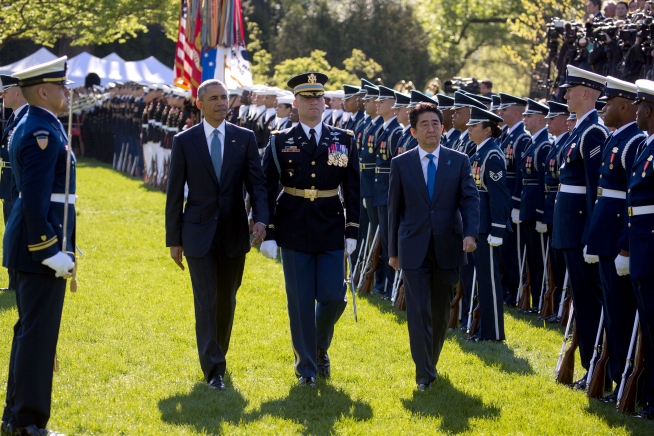
At the same time, Tokyo says that “proactive pacifism policy” will come to an end in 2015 with the revision of Article 9 of the Constitution and “legal” establishment of powerful “regular military”. After which Japan will “actively participate in enforcing peace in the whole world.”
American “involvement” of Japan doesn’t limit itself with the military area. On October 30, 2014, Shinichi Kihara, the Director of International Affairs Division at the Japanese Ministry of Economy, Trade and Industry declared that in 2016 the supplies of liquefied natural gas from the United States will cover 20% of “gas demand” of Japan.
However, in addition to this “carrot” (although the price of this “carrot” is not yet determined and is not being discussed) comes with a “stick”.
First, the United States from the very beginning of the Ukrainian crisis strictly demanded Japan to fully join the anti-Russian sanctions and “isolate Russia as much as possible”.
Secondly, according to Japanese press, the United States “in a commanding tone” demanded Tokyo to cancel the visit of Japanese Minister of Foreign Affairs to Russia, as well as put off the long-agreed upon on the highest official level visit of Russian President Vladimir Putin to Japan.
Thirdly, America demands Japan — its main partner in “Asian Development Bank” — to block the attempts of China to increase assets and influence of the alternative Asian Infrastructure Investment Bank, which is being created under the auspices of Beijing.
Of course, Besides Australia and Japan, the United States “involve” other countries in securing its interests in the Asia-Pacific Region — from the Philippines to Vietnam and from South Korea to Brunei. However, discussing the details of this “involvement” will make us digress from the main topic.
Why is it exactly Russia who found itself at the tip of the American spear?
“Involvement and suppression” of Russia, apparently, became the strategic goal of the USA after the famous Munich Speech of Vladimir Putin. During the International Munich Conference on Security Policy in February 2007 the Russian President for the first time extremely harshly and with clear arguments accused America of conducting consistent policy of limiting security against Russia, as well as provoking and inciting multiple conflict in the world. It was then that the Western media exploded — for the first time since the dissolution of USSR — with hysteric yells regarding the “rebirth of Imperial ambitions of Moscow” and outrage at the “attempts of a second-rate country to influence global politics”.
The reaction of American political establishment to Russian accusations in Munich was most insolently and explicitly expressed by Max Boot — one of the influential neoconservatives, the leading expert of the American Council on Foreign Relations and a consultant to the United States Army Command and General Staff College. Boot published an article back then in “Los-Angeles Times” titled “The louse that roared“. No Western newspaper couldn’t imagine such an indecent article title even in the Cold War.
The first large American attempt to “suppress Russia by involvement” was, apparently, the war in South Ossetia in summer 2008. It seems that the USA, having armed and trained the Georgian army for two years at that time, counted on this operation to be without risk of loss:
- If the Georgian military captures South Ossetia and Abkhazia, and Russia can’t oppose this, Georgia can be quickly made a member of NATO (since the territorial integrity of the country will be restored). After which, NATO bases could be created in Georgia;
- If Russia invades Georgia and captures a significant part of its territory (it seems that the USA considered this to be the most likely turn of events), Russia could then be accused of “unprovoked aggression against a sovereign state.” After which the United States could create an international coalition and deploy NATO “peacekeepers” in Georgia — without a UN Security Council mandate, something the U.S. did more than once. In case of such a turn of events the United States planned to involve Ukraine into this “undeclared war”. Ukrainian President Yushchenko was quite ready to blockade the Black Sea Fleet naval base in Sevastopol, as well as issue an order to troops to engage Russia in military confrontation.
Russia broke both these plans. It defended South Ossetia, but didn’t capture Tbilisi and withdrew troops from Georgian territory. Russia played on the contradictions Yushchenko had with the Prime Minister Timoshenko, as well as with Ukrainian generals, and didn’t allow to involve Ukraine n the conflict back then. And Russia didn’t allow international (meaning NATO) “peacekeepers” to appear in Transcaucasia.
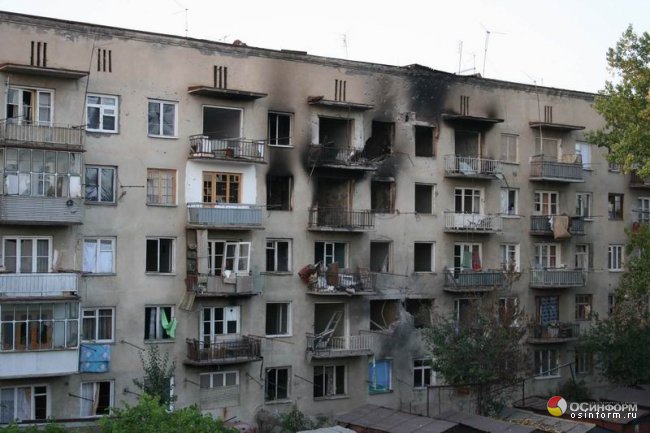
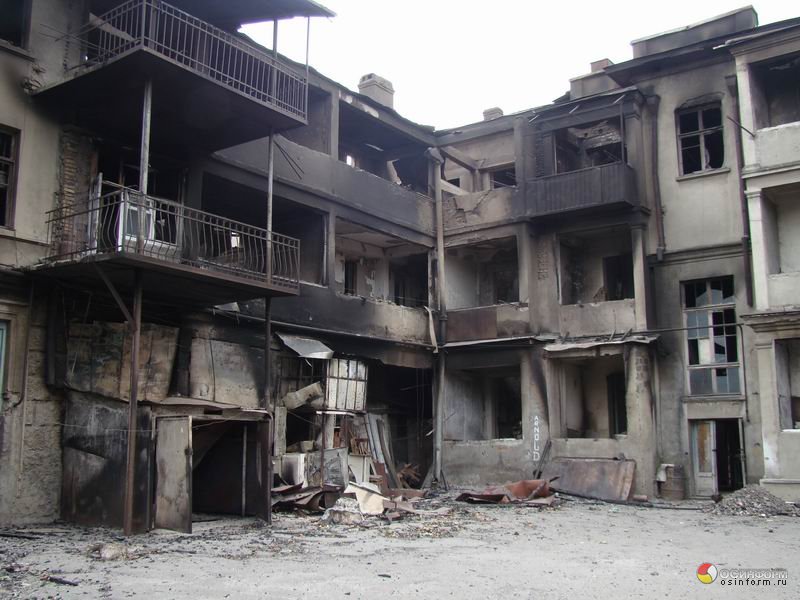

Russia broke the American plan to organize a “colored revolution” in Russia during the winter of 2011-2012, which was being prepared by the U.S. (through social networks, pumping money into multiple friendly NGOs, blackmailing a significant part of Russian elites into involvement) since 2010.
The secret telegram “MOSCOW 000304” published by WikiLeaks is worth noting in this regard. It talks about the meeting between the then-Senior Director of Russian and Eurasian Affairs in the U.S. National Security Council Michael McFaul and Russian “human rights activists” on January 14, 2010. McFaul and his conversation partners discussed how the United States can influence the situation in Russia, as well as methods of “deputinization” of the country. This same thesis on his mission “to contribute to deputinization of Russia” the newly appointed U.S. ambassador to Moscow Michael McFaul declared in fall of 2011 in an interview to the American radio and repeated it in January 2012 during the meeting with “Russian human rights activists” in the American embassy in Moscow.
In December 2012 Russia adopted the so-called “Dima Yakovlev Law”, titled in memory of the American-adopted Russian child who died in the car where his foster father forgot him in an extremely hot weather. This law pretty much banned adoption of Russian orphans by Americans and was perceived by Washington as a deadly insult, since it questioned America’s “noble child-loving qualities”.
During the summer-fall of 2013 Russia vetoed the sanction UN Security Council on military intervention against Syria. After which pretty much stopped the war launched by the United States and its allies against the government of Bashar Assad.
In fall of 2014 Russia actively interfered in the American plan to finally politically and economically separate Ukraine from Russia. During the spring-summer of 2014 Russia broke the plans of continuing the “maidan coup d’etat” that assumed “cleansing” Russian-speaking population of Crimea and Donbass, and supported the referendum on joining Russia in Crimea. Russia helped the self-declared Donetsk and Lugansk Republics to hold out in the war which the Kiev junta started against these Republics.
The list of the events above grants enough explanations of why Russia became America’s enemy number 1. However, this list is not full.
It seems that Russia’s primary “sin” is that it is the only country in the world which dared to confront the primary instruments of American concept of “suppression through involvement”
We will discuss what American strategic interests this threatens in the final parts of the article.
Source (for copy): https://eu.eot.su/?p=4084
This is the translation of the fourth article (first published in “Essence of Time” newspaper issue 102 on November 5, 2014) by Yury Byaly of a series on the conceptual weaponry by which the United States indirectly reshape the world and coerce governments of other countries to make decisions harmful to these countries, but beneficial to the U.S. Part 1. Part 2. Part 3.

